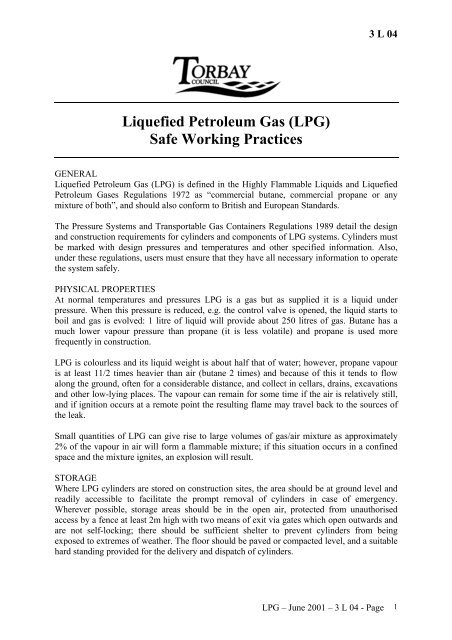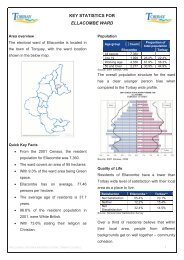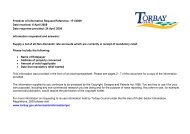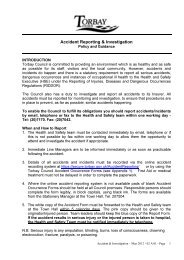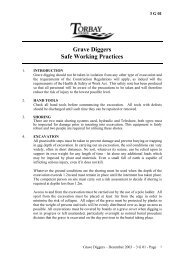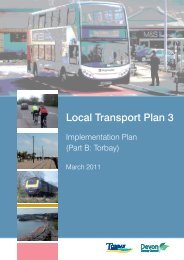Liquefied Petroleum Gas (LPG) Safe Working Practices
Liquefied Petroleum Gas (LPG) Safe Working Practices
Liquefied Petroleum Gas (LPG) Safe Working Practices
You also want an ePaper? Increase the reach of your titles
YUMPU automatically turns print PDFs into web optimized ePapers that Google loves.
3 L 04<br />
<strong>Liquefied</strong> <strong>Petroleum</strong> <strong>Gas</strong> (<strong>LPG</strong>)<br />
<strong>Safe</strong> <strong>Working</strong> <strong>Practices</strong><br />
GENERAL<br />
<strong>Liquefied</strong> <strong>Petroleum</strong> <strong>Gas</strong> (<strong>LPG</strong>) is defined in the Highly Flammable Liquids and <strong>Liquefied</strong><br />
<strong>Petroleum</strong> <strong>Gas</strong>es Regulations 1972 as “commercial butane, commercial propane or any<br />
mixture of both”, and should also conform to British and European Standards.<br />
The Pressure Systems and Transportable <strong>Gas</strong> Containers Regulations 1989 detail the design<br />
and construction requirements for cylinders and components of <strong>LPG</strong> systems. Cylinders must<br />
be marked with design pressures and temperatures and other specified information. Also,<br />
under these regulations, users must ensure that they have all necessary information to operate<br />
the system safely.<br />
PHYSICAL PROPERTIES<br />
At normal temperatures and pressures <strong>LPG</strong> is a gas but as supplied it is a liquid under<br />
pressure. When this pressure is reduced, e.g. the control valve is opened, the liquid starts to<br />
boil and gas is evolved: 1 litre of liquid will provide about 250 litres of gas. Butane has a<br />
much lower vapour pressure than propane (it is less volatile) and propane is used more<br />
frequently in construction.<br />
<strong>LPG</strong> is colourless and its liquid weight is about half that of water; however, propane vapour<br />
is at least 11/2 times heavier than air (butane 2 times) and because of this it tends to flow<br />
along the ground, often for a considerable distance, and collect in cellars, drains, excavations<br />
and other low-lying places. The vapour can remain for some time if the air is relatively still,<br />
and if ignition occurs at a remote point the resulting flame may travel back to the sources of<br />
the leak.<br />
Small quantities of <strong>LPG</strong> can give rise to large volumes of gas/air mixture as approximately<br />
2% of the vapour in air will form a flammable mixture; if this situation occurs in a confined<br />
space and the mixture ignites, an explosion will result.<br />
STORAGE<br />
Where <strong>LPG</strong> cylinders are stored on construction sites, the area should be at ground level and<br />
readily accessible to facilitate the prompt removal of cylinders in case of emergency.<br />
Wherever possible, storage areas should be in the open air, protected from unauthorised<br />
access by a fence at least 2m high with two means of exit via gates which open outwards and<br />
are not self-locking; there should be sufficient shelter to prevent cylinders from being<br />
exposed to extremes of weather. The floor should be paved or compacted level, and a suitable<br />
hard standing provided for the delivery and dispatch of cylinders.<br />
<strong>LPG</strong> – June 2001 – 3 L 04 - Page 1
3 L 04<br />
The area should be kept clear of all flammable material, weeds and rubbish; there should be<br />
no adjacent drains or cellars and permanent notices stating “<strong>LPG</strong> - Highly Flammable”<br />
should be prominently displayed adjacent to each entry point. Notices prohibiting smoking<br />
and naked lights should also be posted.<br />
HANDLING<br />
Good practice in handling, loading and unloading will minimise the risk of accidental gas<br />
leakage and consequently the major hazard, fire. Adamaged or leaking valve can have serious<br />
and dangerous consequences, a crumpled base ring cannot hold a cylinder upright.<br />
TRANSPORTATION<br />
The transportation of cylinders is governed by the Road Traffic (Carriage of Dangerous<br />
Substances in Packages, etc.) Regulations 1986. In general, cylinders, full or empty, must be<br />
stood upright, valves uppermost and be properly secured to prevent movement. Adequate<br />
ventilation must be provided and an open vehicle should be used where possible. A suitable<br />
fire extinguisher, e.g. dry powder, must be readily available. The driver should carry a<br />
“Tremcard” (or equivalent information) and he must have been adequately trained in matters<br />
such as emergency procedures.<br />
Cylinders which are part of equipment, such as tar boilers, together with one spare cylinder<br />
(where the equipment uses only one cylinder) are exempt from the Road Traffic (Carriage of<br />
Dangerous Substances in Packages, etc.) Regulations, but the basic precautions detailed<br />
above should be observed. “The carriage of more than one spare cylinder attracts the full<br />
provisions of the regulations.”<br />
LEAK DETECTION<br />
Cylinders, valves, connections, piping and hoses should be inspected regularly for leaks -<br />
NEVER with a naked flame. Leaks may be detected by:-<br />
• Characteristic smell<br />
• Sound of escaping gas<br />
• Condensation or frost around the area of the leak<br />
• Brushing soapy water over suspect area or valve and looking for bubbles<br />
If leakage is discovered on a cylinder and cannot be stopped, the cylinder should be removed<br />
as quickly as possible to open space clear of all buildings and people, away from drains,<br />
culverts or hollows and away from any potential source of ignition. It should be placed with<br />
the leak uppermost, marked with warning notices and the supplier notified as a matter of<br />
urgency. Replacing the plastic cap will reduce a small valve leak.<br />
FIRE PRECAUTIONS<br />
Provision should be made for an adequate supply of water for hoses, hydrants, mobile<br />
equipment or fixed spray systems; for small installations, a 20mm hose reel installation<br />
should be adequate, and hydrants should be accessible at all times and so spaced as to provide<br />
total <strong>Liquefied</strong> <strong>Petroleum</strong> <strong>Gas</strong> (<strong>LPG</strong>) <strong>Safe</strong> <strong>Working</strong> <strong>Practices</strong> protection of all cylinder<br />
storage areas or bulk tanks.<br />
A sufficient number of fire extinguishers, preferably of the dry powder type (BS 5423),<br />
should be strategically placed around the storage area and properly maintained. Foam<br />
extinguishers are not suitable for <strong>LPG</strong> fires. A minimum of 4.5kg of dry powder is necessary<br />
for around 450kg of <strong>LPG</strong>; 9kg for quantities above this.<br />
<strong>LPG</strong> – June 2001 – 3 L 04 - Page 2
3 L 04<br />
Weeds, long grass and other combustible material should be removed from the area around a<br />
cylinder store or tank. If an automatic alarm system has been installed then this should be<br />
checked regularly.<br />
EMERGENCY ACTION<br />
In cases of emergency it is of paramount importance to avoid endangering life, and although<br />
it is impossible to set down a fixed procedure for every eventuality the following actions<br />
should be carried out in all but the most minor hazard situations:-<br />
• Summon the fire brigade, and police if necessary. Inform emergency services personnel<br />
of the location of all <strong>LPG</strong> stocks.<br />
• Evacuate all persons from the danger area, except those necessary to deal with the<br />
emergency.<br />
• Confirm to the fire-fighting services that nobody is trapped and that the supply<br />
company’s representative will be notified.<br />
In the case of gas leakage without fire, stop the escape of gas at the earliest possible moment<br />
either by normal or emergency means. If this is not possible, remove defective cylinders to a<br />
safe area. Ignition hazards must be avoided - naked lights, fires, vehicle engines, boilers,<br />
electrical equipment; vehicles should be abandoned and not driven away, and telephones in<br />
the danger area not used.<br />
In the case of gas leakage with fire, the first concern should be to examine the possibility of<br />
cutting off the source of leakage and only if this is possible should an attempt be made to<br />
extinguish the fire using dry powder extinguishers.<br />
Using <strong>LPG</strong><br />
CONNECTING CYLINDERS<br />
Stand the cylinder upright, on a firm base, in the required position and away from any<br />
lowlevel features such as trenches, cellars, etc.<br />
Check that the main valve is closed, then remove the protecting cap or plug - the thread is<br />
“left-hand” (turn clockwise to unscrew).<br />
Return valve protecting cap or plug and, where provided, valve cover cap, to a safe place.<br />
Check that threads on cylinder and regulator are clean and undamaged, and that the valve<br />
outlet conforms to BS 341, Part 1, to prevent butane control equipment being used on<br />
propane, and vice versa.<br />
Have the correct size of spanner and screwdriver available.<br />
Ensure that the regulator is fitted to the cylinder without straining piping or hose which could<br />
cause failure and cross threading of the nut.<br />
SAFE METHODS OF OPERATION<br />
1. Check that burners and containers have sufficient ventilation.<br />
2. See that burners are protected from draughts which might extinguish the flame.<br />
<strong>LPG</strong> – June 2001 – 3 L 04 - Page 3
3 L 04<br />
3. Removal all combustible material from within 1m of the burner, or, if the material<br />
cannot be removed, e.g. wooden boarding, then protect it with insulating material<br />
leaving a 12mm air gap between insulation and combustible material.<br />
4. Ensure that all equipment is matched and in good condition and that piping, or tubing<br />
cannot be damaged by abrasion, wheelbarrows or heat from a burner.<br />
5. Check that the equipment is clean and that the jets are clear, this is especially relevant<br />
where spillage is liable to occur.<br />
6. Check that the regulator is set, first for the lighting up pressure and afterwards is reset<br />
for the operating pressure required by the appliance.<br />
7. Check that controls operate easily and that the cylinder is positioned so that, in the<br />
event of fire, access to the valve remains clear.<br />
8. Operate equipment only in accordance with the manufacturer’s instructions.<br />
MAINTENANCE<br />
To ensure a high standard of safety in the use of <strong>LPG</strong> equipment and appliances, weekly<br />
inspections should cover testing for leaks, cleaning, adjustments, and, as necessary, the<br />
provision of hose clips, ferrules and replacement of damaged hoses.<br />
DISCONNECTING CYLINDERS<br />
When a cylinder is “empty”, or the equipment has to be dismantled, the cylinder valve and all<br />
other valves must be closed.<br />
Unscrew the connection (clockwise) and remove the regulator and equipment to a safe place.<br />
Replace the valve thread protecting plug or cap and, where provided, the valve cover cap.<br />
Remove the cylinder to the correct storage area, leaving the valve closed to prevent any<br />
escape of gas with changes in temperature and to prevent any additional possibility of air<br />
being sucked back into the cylinder.<br />
<strong>LPG</strong> – June 2001 – 3 L 04 - Page 4


